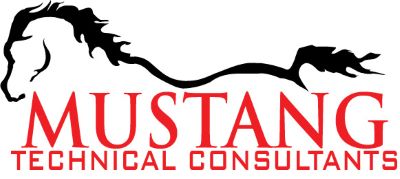
Engineering
- Design Engineer
- Firmware Engineer
- Hardware Engineer
- Network Engineer
- Voice Data Engineer
- Test Engineer
- Integrated Circuit Designer
- Embedded Systems Engineer
- Analog Design Engineer
Software Development
- Applications Development
- Software Developer Coder
- GUI Designer
- Configuration Manager
- Programmer Analyst
- Website Developer
- Software Tester
- Code Debugger
System Administration
- System Engineer
- System Programmer
- System Security
- Software Installation/Upgrade
- Webmaster
- Server Support
- Capacity Planner
- Disaster Recovery Specialist
- Storage Management
- Groupware Administrator
Quality Assurance/ Testing
- QA Developer
- QA Specialist
- QA Analyst
- QA Tester
- Quality Engineer
- Test Methodologies
- Expert Test Case Designer
- Integrated Circuit Testing
- Systems Testing
Data Management
- Database Design
- Database Administrator
- Database Analyst
- Information Architect
- Data Modeler
- Data Warehousing
- Data Security Analyst
- Data Recovery/Backup
Network Management
- LAN/WAN Design
- Network Administrator
- Network Analyst
- Network Architect
- Network Security
- Network Configuration
- Network Installation
- Telecom Technician
- Telecom Analyst
Internet/Web
- Web Designer
- Web Developer
- Web Producer
- Web Interface Developer
- Multimedia Developer
- Content Specialist
- Graphics Designer
- E-Commerce Specialist
Systems Support/Help Desk
- Help Desk Manager
- Customer Service Rep
- Desktop Support
- Desktop Configuration
- Troubleshooting
- Problem Resolution
- Call Center Representative
- End-User Support
Miscellaneous
- Project Manager
- Technical Writer
- Marketing & Sales Directors
- Field Engineer
- Administrative Aide
ADVANTAGES OF USING MUSTANG FOR YOUR RECRUITING NEEDS
The biggest advantage of using a contingent recruiter is that you incur no out-of-pocket expense unless a candidate is hired. There is an inherent and often very high cost when existing staff must handle the hiring process – working with technical managers to write thorough job descriptions, writing and placing ads, posting jobs on the Internet, receiving and reviewing resumes, calling and screening candidates, selling the company, conducting personal interviews, investigating academic claims, doing background and criminal checks, contacting previous employers, preparing the paperwork and closing the candidate. The entire process can take several weeks or more, depending on the position being filled. Your staff’s wages and benefits are relevant costs that must be calculated in the cost per hire. Also, while they are busy doing all of the hiring steps, they usually are not doing the job for which they originally were hired.
Is the successful candidate essential to the survival and growth of your business or to resolving business issues or revenue-threatening problems? Start-up or small firms especially cannot afford to make hiring mistakes for positions of significance. Should you hope that the perfect person for whom you are looking happens to be looking for a job at the very same time, or should you have a professional actively seeking and recruiting the talent that you need from your competitors? Keep in mind that the best candidate may not be an active job seeker, and may not have posted his resume or responded to your ads. If the position is significant, a professional recruiter is your best choice. You pay a fee only if you hire a candidate and are happy with the resulting work. A competent, top-tier candidate who helps your business grow and prosper is an investment in your company’s future and only a minor, one-time cost.
Savvy executives learned long ago that the fee paid to a recruiter is a shrewd strategic investment, not an extraneous expense. The next time you think a recruiter’s fees are too high, put them in the proper perspective before spinning your wheels thrashing about trying to fill vital openings with less effective, but not necessarily less expensive, pedestrian methods.
Active verse Passive Approach
Job boards provide a “passive” potential solution, require significant out-of-pocket expense on the front end, demand a great amount of staff time and involvement, may result in an inferior candidate and do not guarantee any results. The annual fee to use one of these is often more than $10,000. Most firms subscribe to only one, if any, so they choose the most popular. But everyone else does, too, so you are picking through the same small group of potential candidates. No matter what resume database site that you choose, you still have to invest the time to post jobs, search resumes, review resumes, contact prospective candidates by phone or email, screen for both personal and professional skills and make sure that they are qualified, interested and priced within your desired range. You also have to manage the follow-up phone calls, sell them on your opportunity, make sure that their availability coincides with yours and then make sure they report for work. Don’t be fooled by the dollar amount that you believe you are spending using this approach. It generally is much higher than you think. You bear the costs of salaries and benefits of the employment and recruiting staffs, plus those of the line managers involved in the hiring activity (each of whom is not being productive in normal job pursuits while spending time recruiting), travel, lodging and entertainment expenses of in-house recruiters’ source development costs, and overhead expenses including, but not limited to, telephone, office space, postage, PR literature, applicant database maintenance, job posting fees, reference and background checks, and the clerical costs of corresponding with hundreds of unqualified resp
